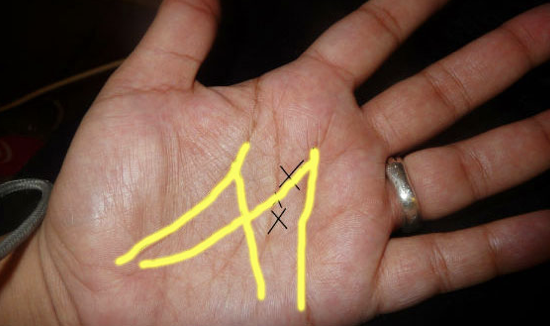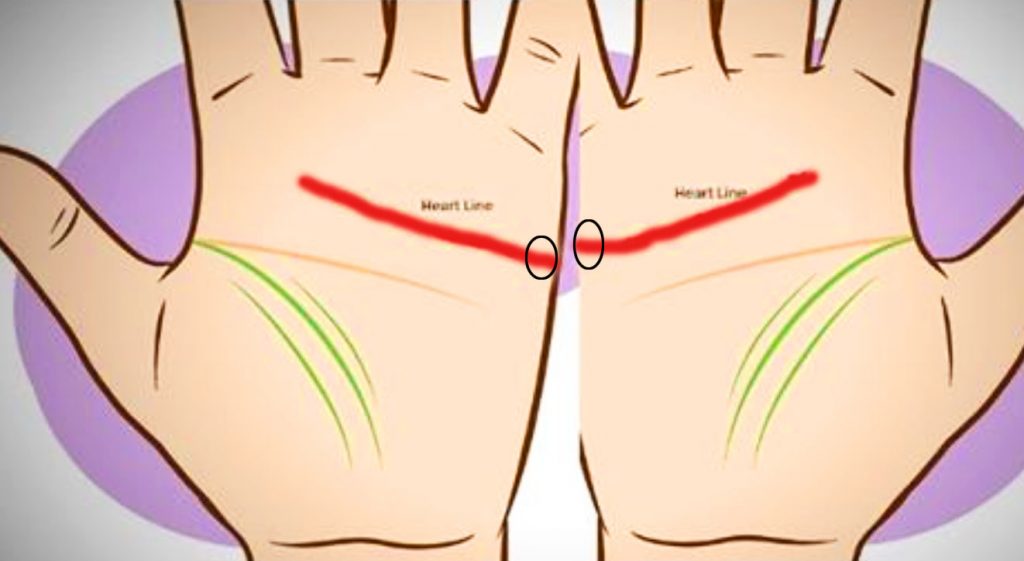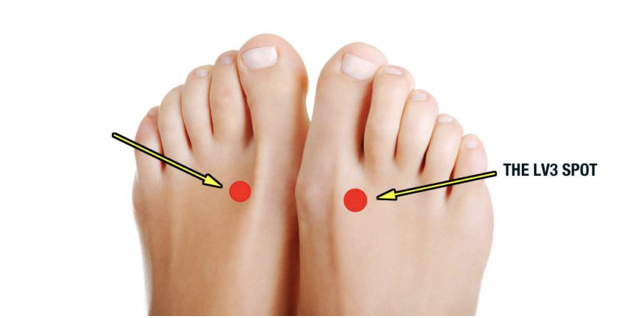THIS Blind Man Drew Pictures Of What He Thought Different Things Looked Like But The Results Are UNTHINKABLE!
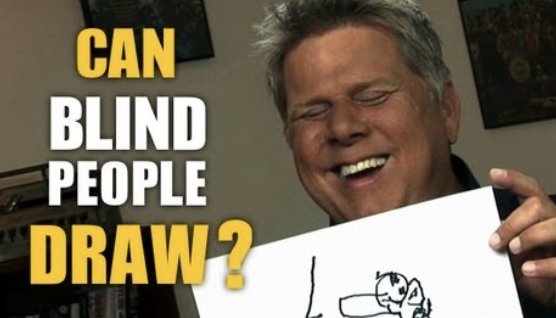
image via – youtube.com
Tommy Edison, a huge presence on YouTube where his average video gets more than 1 million views, is a film critic. What attracts so many viewers to him is his lovely nature which is exemplified through his sense of humor, his chatty style and self-deprecating reflections. But that’s not all…he has been blind since birth!
Born with an undeveloped optic nerve, Edison can’t literally “watch” films, but he indeed loves them. He brings an unbelievably unique point of view to his movie reviews, from a blind person’s perspective. He “views” films through an aid for blind people known as “audio description”.
Edison is particularly discerning about how sound and music convey information. In the video below, this charming man shows us what it is to draw objects, that he only knows through his tactile experience of them. He talks about the difficulty of even conceptualizing something in 2D when you have never been able to see, and know everything through touch.
He is such a wonderful example for us all about how to live life to the fullest, within the constraints of our limitations.
Let us know what you think of this!
Please SHARE This With Your Family and Friends
If You Keep Your Eyes On This Black Dot For Long Enough Prepare To Have Your Mind Blown!
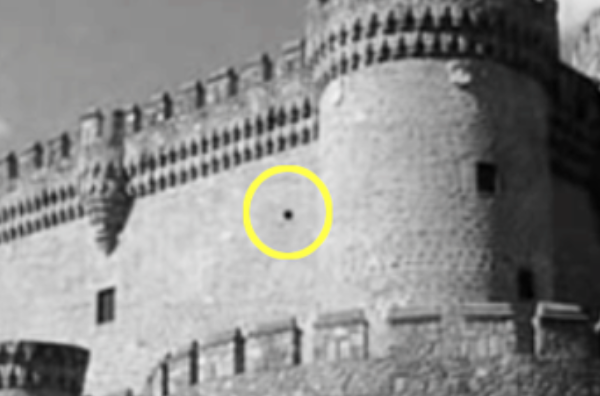
image via – youtube.com
If you can’t believe your eyes, you may be looking at an optical illusion. That’s because optical illusions, by definition, are images or sights that strongly disagree with physical reality. When we suddenly realize that not all is as it appears to be, our brains light up and we pay extra attention to whatever it is that’s playing tricks on us.
Since it is our brains that interpret and make sense of all the incoming sights, we often love looking at optical illusions because they’re new challenges for us to take on and figure out. According to Aude Oliva, a cognitive research scientist at MIT, “Anything that is new and surprising is something we naturally like because it means that we may learn something from it.”
It’s no wonder so many of us enjoy illusions, and this one here is no exception! The video features a black and white image of Dunstanburgh Castle, a centuries old fort located on the sea coast of northern England. The directions that accompany the clip tell you exactly how to view the picture and all it requires is that you stare at the dot in the middle of the screen.
As the picture changes from black and white to color, and then back to black and white, your eyes will have a hard time keeping up with it. The cones in the retina of our eyes are responsible for color vision, but when you stare at the bright false color image that the picture switches to, they quickly become desensitized.
That’s why, when the black and white castle appears for the second time, it looks to be in full color. It is because our cones are still briefly sending color signals to our brain and need time to readjust to the new color scheme. After a few seconds they should have re-adjusted and you’re back to seeing the black and white castle.
Here’s a little background information about the interesting visual phenomenons we experience. When it comes to optical illusions, they are all about the eyes, brain, and perception. Specifically, the eyes visually perceive an image which the brain then processes as not fitting in line with or matching the stimulus source that it’s emanating from.
In other words, it’s when you look at something and end up seeing something else that’s completely different. You look at X but think you’re seeing Y. Generally speaking, there are many different types of illusions and optical ones, also known as visual illusions, happen to be the most well known sub-category. To experience one right now, check out the video.
It’s a fun way to fool your senses so have fun and enjoy!
Please Share This With Your Family and Friends
Do You Have The Magic Eye? Can You See These Hidden Images?

image via – shutterstock.com
Do you remember how back in the mid-90s all of those Magic Eye books were a smash hit? In fact. the original three book series were so popular that they ended up topping the New York Times best seller list for weeks and weeks on end.
The awesome pictures featured on the glossy pages are called autostereograms. They’re the magic behind the illustrations because they are a special type of 2D image designed to contain 3D images hidden within them.
Autostereograms, the ones we are familiar with, were originally invented by Bela Julesz. He was a visual neuroscientist and psychologist who was trying to prove a theory he came up with, which was that depth perception occurred in the brain and not the eyes.
At the time, this was the common belief and so he set out to test people’s ability to see in 3D with images he created that were similar in type to the modern day Magic Eye version. It turned out that the visual illusion’s he developed proved his theory correct and years later they evolved into the Magic Eye images that we all know and love!
If you’re anything like me, then you likely have trouble spotting the hidden images in the pictures. This is due in part because of the need for us to adjust our eyes and change the way we normally perceive depth. If you are able to successfully do this, the hidden 3D image will appear out of the patterned image you’re staring at.
So how do you change your natural depth perception abilities? Good question and here is a breakdown of the instructions from the Magic Eye website on how to best view the images:
Start by looking at the center of the image extremely close up. The computer or page should practically be touching the tip of your nose.
Next, adjust your focus. It helps to try and look right through the picture, off into the distance.
Now slowly begin to steadily move the picture away from your eyes until the 3D image pops out at you.
If you’re still unable to see after trying all of the above, then you may have to move the image back towards you and closer to your face, or further away. Finally, you may also need to start all over so you can re-set your eyes and focus.
Also, when you’re able to see the hidden image allow your eyes to adjust a tad bit more. This will make it become clearer and much more defined. At that point you’ll be able to see more of the depth and details within it.
For those out there who are not be able to see anything, don’t worry! It’s hard to adjust your eyesight in order to be able to see past the 2D image. If you happen to be one of them, don’t give up! Keep trying and you should eventually be able to crack the brain/eye barrier that’s making you trip up.
Test out your Magic Eye abilities right now by working through the images below and see how skilled you are at perceiving the 3D images. Good luck and enjoy!
Please SHARE This With Your Family and Friends
Can Your Eyes See These Almost Invisible Objects? Find Out!

image via – shutterstock.com
People go to doctors for regular check ups and when they feel sick or in pain. They visit the dentist to take care of oral health issues and for annual teeth cleanings. Yet they rarely go to the eye doctor for eye exams and vision screenings, unless they suddenly develop a severe eye problem.
While we oftentimes neglect to stay on top of our visual health, we really do need to maintain and test our eye sight annually. The majority of adults start to experience vision loss in their early to mid-40’s and with every passing year it only gets worse, unless you do something about it.
There are a number of factors other than aging which help to decrease our vision over time, including eye strain, disease, inflammation, and overexposure, which is why we have to try and keep our eyes as healthy as possible.
This test is a quick and easy way to figure out if your vision is functioning as optimally as it should be. Whether or not you’re able to see the series of increasingly dim and faded numbers, shapes, and letters will tell you if you should have your eyes checked out further by a professional.
Try it now and Good luck! Did you pass?
Please SHARE This With Family and Friends So They Can Test Their Eye Sight 🙂
Do You Have The Magic Eye? Find Out.
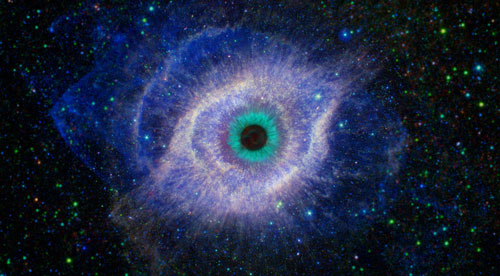
image via – shutterstock.com
Do you remember the days when the Magic Eye book series were all the rage? The original three books came out in the mid-nineties and were so popular they topped the New York Times best seller list for weeks on end. The images featured on the glossy pages are known as autostereograms which are 2D images designed to contain 3D images hidden within them!
Autostereograms as we know them were originally invented by Bela Julesz, a neuroscientist and psychologist who wished to prove his theory that depth perception occurred in the brain and not the eyes, the common belief at the time. To do this he set out to test people’s ability to see in 3D with images he created that were similar in type to the Magic Eye version! The visual illusion’s proved his theory and years later they spawned the Magic Eye images we all know and love..
When looking at a Magic Eye picture a person must adjust their eyes and change the way they normally perceive depth. If they are able to do this successfully, the hidden 3D image will appear out of the patterned image they’re staring at. Instructions for viewing the images given on the Magic Eye website are broken down as follows:
1) Look at the center of the image extremely close up. It should almost touch your nose.
2) Adjust your focus and try to look right through it into the distance.
3) Begin to slowly and steadily move the picture away from your eyes until the 3D image pops out at you!
You may have to move the image back towards you, closer to your face, or further away and it’s best to start over if you need to do so. Once you’re able to see the hidden image you should allow your eyes to adjust, it’ll become clearer, more defined, and at that point you can see more of the depth and details in it. Some people may not be able to see anything and can’t adjust their eyesight to see past the 2D image. If you’re one of them, keep trying and eventually you should be able to crack the brain/eye barrier that’s tripping you up!
To test your Magic Eye abilities try working through the pictures below and see how skilled you really are at perceiving the 3D images, good luck!
Please Share This With Family and Friends 🙂
VIDEO: This Guy Tells You To Stare At The Dot But The Something Very Strange Happens!
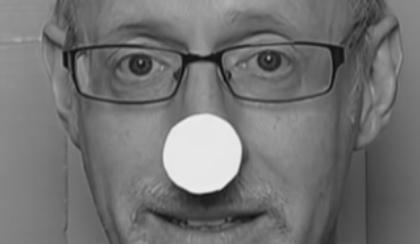
People often mistakenly think that what they see, or are viewing, is a direct representation of reality. What we are seeing is actually a translation of our external realities that has been formed by our eyes and mind. We see objects because they reflect light, which goes into our eyes where it’s focused and sent to the brain via the optic nerve.
The brain takes the information it receives from the eyes and translates it into the images which we are “seeing.” When you trick your eyes, you trick your brain, and that is a short way to explain the complex science behind some optical illusions. This video will give you a chance to do exactly that; try out an optical illusion, and see if it tricks your eyes!
Turn up the computer screen brightness and prepare your mind, body, soul, and especially your eyes, for an optical illusion experience. Fear not, there are no flashing strobe-like lights, sudden loud sounds, or scary images in this video. All you need to do is stare at the dark dot on the screen, which the man places on his nose.
Do your best to not move your head, eyes, or overall position, and this only lasts a few moments so it’s easy. Be sure to keep your eyes steadily focused on the black dot. After a short bit the video will turn from the odd color that it’s in to black and white.
Once the video changes over to black and white you should continue seeing it in full color for a few seconds. Then the colors will quickly fade and you’ll see it for what it is; in black and white shades. The black dot you were staring at is now white, did you pick up on that? The eye trick is achieved by over-saturating your eyeballs with certain colors, hence the strange background hues. When you expose your eyes for some time to certain colors your eyes will adapt to those colors.
When the picture switched over to black and white, your eyes were still perceiving the colored image and couldn’t immediately switch over, or adapt, to the new image. It takes a few moments for the brain to process the sudden changes and signals that the rods and cones in the eyes are sending it’s way.
This illusion is really neat and hopefully you had fun trying this! Check out videos like this and more at magician, author, and psychologist Richard Wiseman’s YouTube channel, Quirkology.
There are all sorts of mind bending and magical things that you can learn from him!
Please Share With Friends On Facebook

